Introduction
In the vast realm of culinary arts, few ingredients possess the versatility and inherent flavor that can elevate a dish to new heights quite like fresh bamboo shoots. These delicate yet robust stalks, harvested from the heart of the bamboo plant, have been a staple in Asian cuisines for centuries, offering a crisp texture and a subtly sweet, earthy taste that complements a wide array of dishes. One of the most cherished ways to enjoy fresh bamboo shoots is by stewing them with meat, a process that not only allows the flavors to meld beautifully but also tenderizes the ingredients, resulting in a hearty, comforting meal that satisfies both the palate and the soul.
This article delves into the intricacies of stewing meat with fresh bamboo shoots, from selecting the perfect ingredients to mastering the cooking technique, ensuring that every bite is a burst of flavor and texture. Whether you’re a seasoned chef or a home cook eager to experiment, this guide promises to unlock the secrets of creating a culinary masterpiece that will leave your guests asking for seconds.
Selecting Fresh Bamboo Shoots
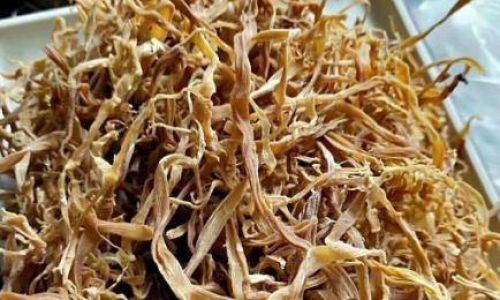
The first step in crafting a delicious stew is sourcing the freshest bamboo shoots possible. Fresh bamboo shoots are typically available during the spring and early summer when the plants are actively growing. Here are a few tips for selecting the best bamboo shoots:
-
Appearance: Look for shoots with firm, tight skin that has a light green or creamy hue. Avoid those with cracks, soft spots, or discoloration, as they may be old or spoiled.
-
Texture: Fresh bamboo shoots should feel firm to the touch. Give them a gentle squeeze; if they feel mushy, they are likely past their prime.
-
Smell: Fresh bamboo shoots have a mild, earthy aroma. If they smell sour or have an off-putting odor, it’s best to pass them by.
-
Source: If you live in an area where bamboo grows naturally, consider harvesting your own shoots. Alternatively, seek out reputable farmers’ markets or Asian grocery stores that specialize in fresh produce.
Once you’ve secured your bamboo shoots, it’s crucial to prepare them properly before stewing. This involves peeling away the outer layers, cutting them into bite-sized pieces, and, in some cases, boiling them briefly to remove any bitterness.
Choosing the Right Meat
The type of meat you choose will greatly influence the final flavor of your stew. Here are a few options that pair exceptionally well with fresh bamboo shoots:

-
Pork Belly: Its rich, fatty texture adds depth to the stew, while the leaner cuts absorb the flavors of the bamboo shoots and broth.
-
Chicken Thighs: Dark meat chicken is perfect for stewing as it stays moist and tender, complementing the crispness of the bamboo shoots.
-
Beef Brisket: Slow-cooked beef brisket becomes incredibly tender and flavorful, making it an ideal match for the subtle sweetness of bamboo shoots.
-
Lamb Shanks: Lamb’s rich, gamey flavor is balanced beautifully by the earthiness of bamboo shoots, resulting in a hearty, satisfying dish.
When selecting meat, opt for cuts that are suitable for slow cooking, as they will have the time to break down and meld with the flavors of the bamboo shoots and broth.
Seasoning and Aromatics
The key to a successful stew lies not just in the main ingredients but also in the seasoning and aromatics that bring everything together. Here are some essential elements to consider:
-
Soy Sauce and Oyster Sauce: These umami-rich condiments add depth and complexity to the broth.
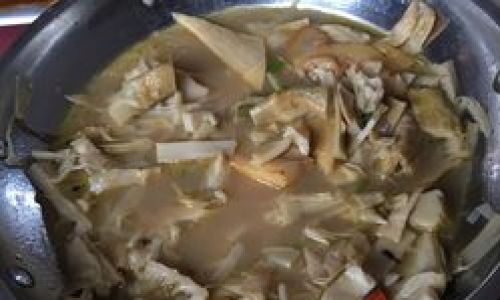
-
Ginger and Garlic: Fresh ginger and garlic provide a spicy, aromatic backbone that enhances the flavors of both the meat and bamboo shoots.
-
Star Anise and Cinnamon Sticks: Whole spices like star anise and cinnamon sticks add warmth and a hint of sweetness to the stew.
-
Shaoxing Wine or Dry Sherry: A splash of alcohol helps to deglaze the pan and adds a layer of sophistication to the broth.
-
Scallions and Sesame Oil: For garnish, chopped scallions and a drizzle of sesame oil add freshness and a nutty finish to the dish.
The Stewing Process
Now that you have your ingredients prepared, it’s time to embark on the stewing process. Here’s a step-by-step guide to creating a perfect stew:
-
Sear the Meat: Begin by searing the meat in a hot, oiled pot until browned on all sides. This locks in juices and adds a layer of flavor to the broth.
-
Sauté Aromatics: Remove the meat from the pot and sauté chopped ginger, garlic, and any whole spices until fragrant. This releases their oils and flavors, creating a flavorful base for the stew.

-
Deglaze the Pot: Pour in a small amount of Shaoxing wine or dry sherry and scrape the bottom of the pot to loosen any browned bits, incorporating them into the broth.
-
Add Broth and Seasonings: Return the meat to the pot, add enough broth (chicken, beef, or vegetable) to cover, and pour in soy sauce, oyster sauce, and any additional seasonings.
-
Simmer: Bring the mixture to a gentle simmer, then add the prepared bamboo shoots. Cover the pot and let it cook slowly over low heat for at least an hour, or until the meat is tender and the flavors have fully developed.
-
Taste and Adjust: Periodically check the stew, tasting and adjusting the seasoning as needed. You may want to add more soy sauce for saltiness or a touch of sugar to balance the flavors.
-
Finish and Garnish: Once the meat and bamboo shoots are tender, remove the pot from heat. Serve the stew hot, garnished with chopped scallions and a drizzle of sesame oil.
Serving Suggestions
A well-made stew is a meal in itself, but there are a few ways to elevate your dining experience:
-
Steamed Rice: Serve the stew over a bed of fluffy, steamed rice to soak up all the delicious juices.
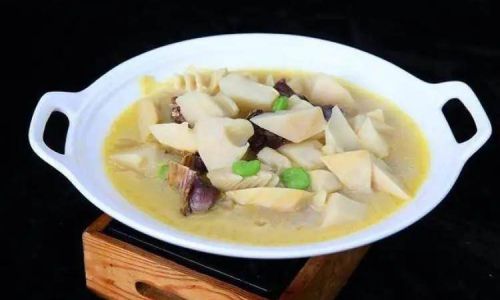
-
Pickled Vegetables: Add a side of pickled vegetables, such as daikon or cucumbers, for a refreshing contrast to the rich stew.
-
Fresh Herbs: Garnish with fresh cilantro, mint, or basil to add a burst of freshness and color to the dish.
-
Chili Oil: For those who enjoy a bit of heat, drizzle a small amount of chili oil over the stew before serving.
Conclusion
Stewing meat with fresh bamboo shoots is a culinary journey that takes you through the art of selecting, preparing, and cooking ingredients to create a dish that is both nourishing and delightful. By following the guidelines outlined in this article, you’ll be able to craft a stew that is not only flavorful and satisfying but also visually appealing and full of texture. Whether you’re entertaining guests or simply enjoying a quiet meal at home, this dish promises to deliver an unforgettable culinary experience. So, gather your ingredients, fire up your stove, and embark on a culinary adventure that will leave you and your loved ones savoring every last bite.



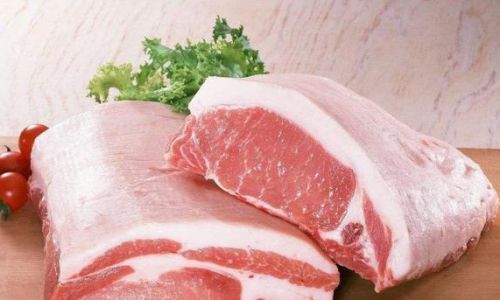
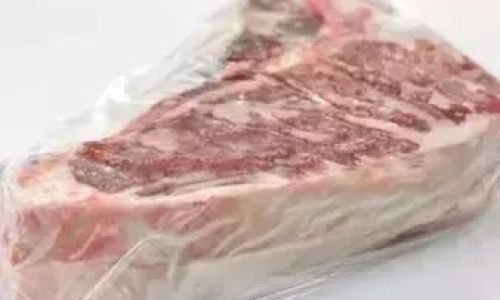
0 comments